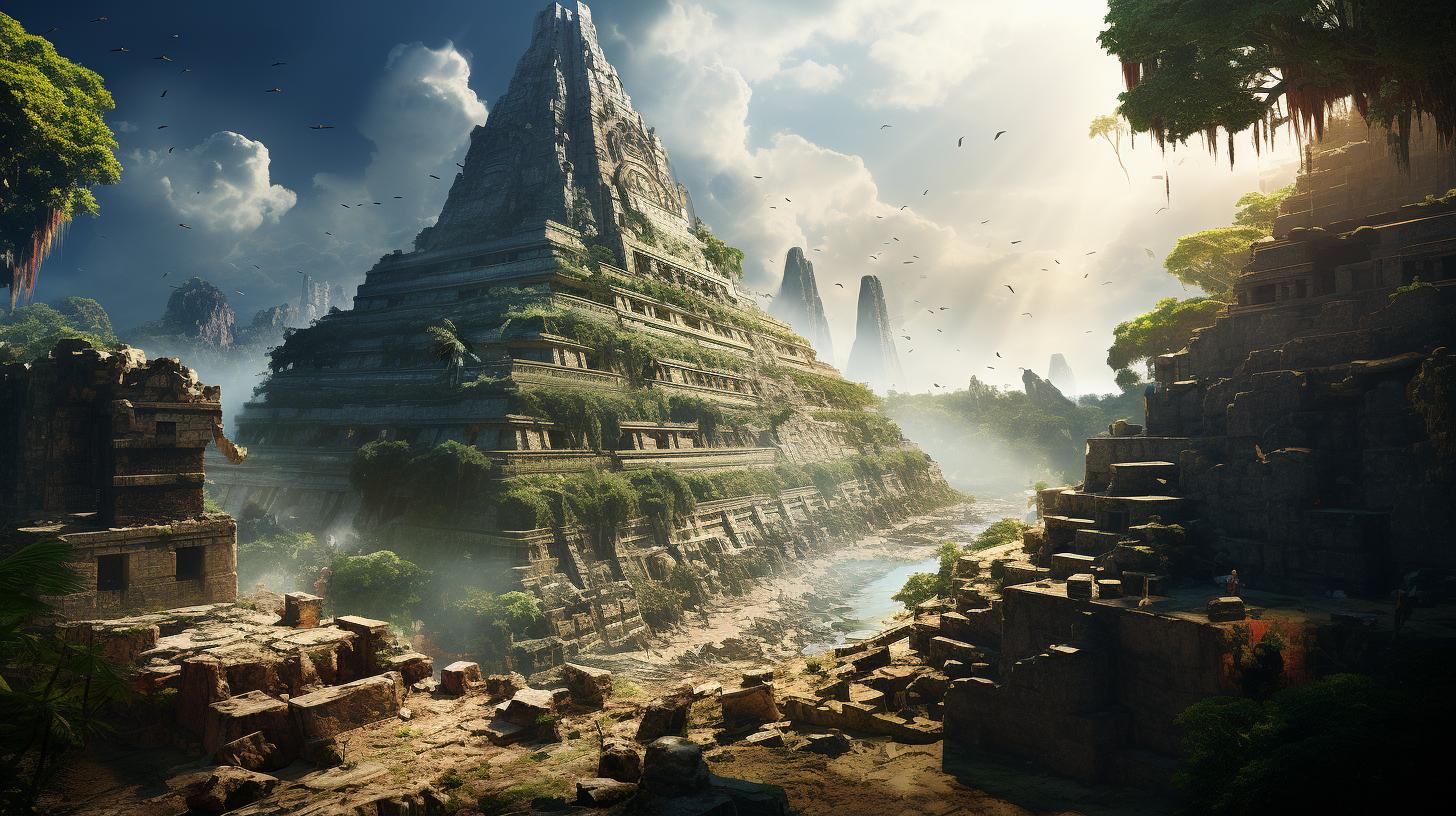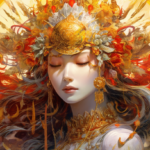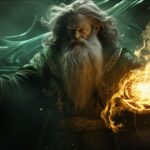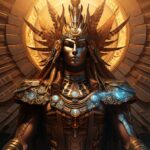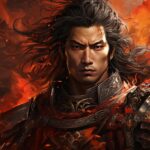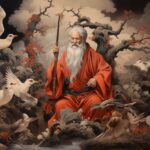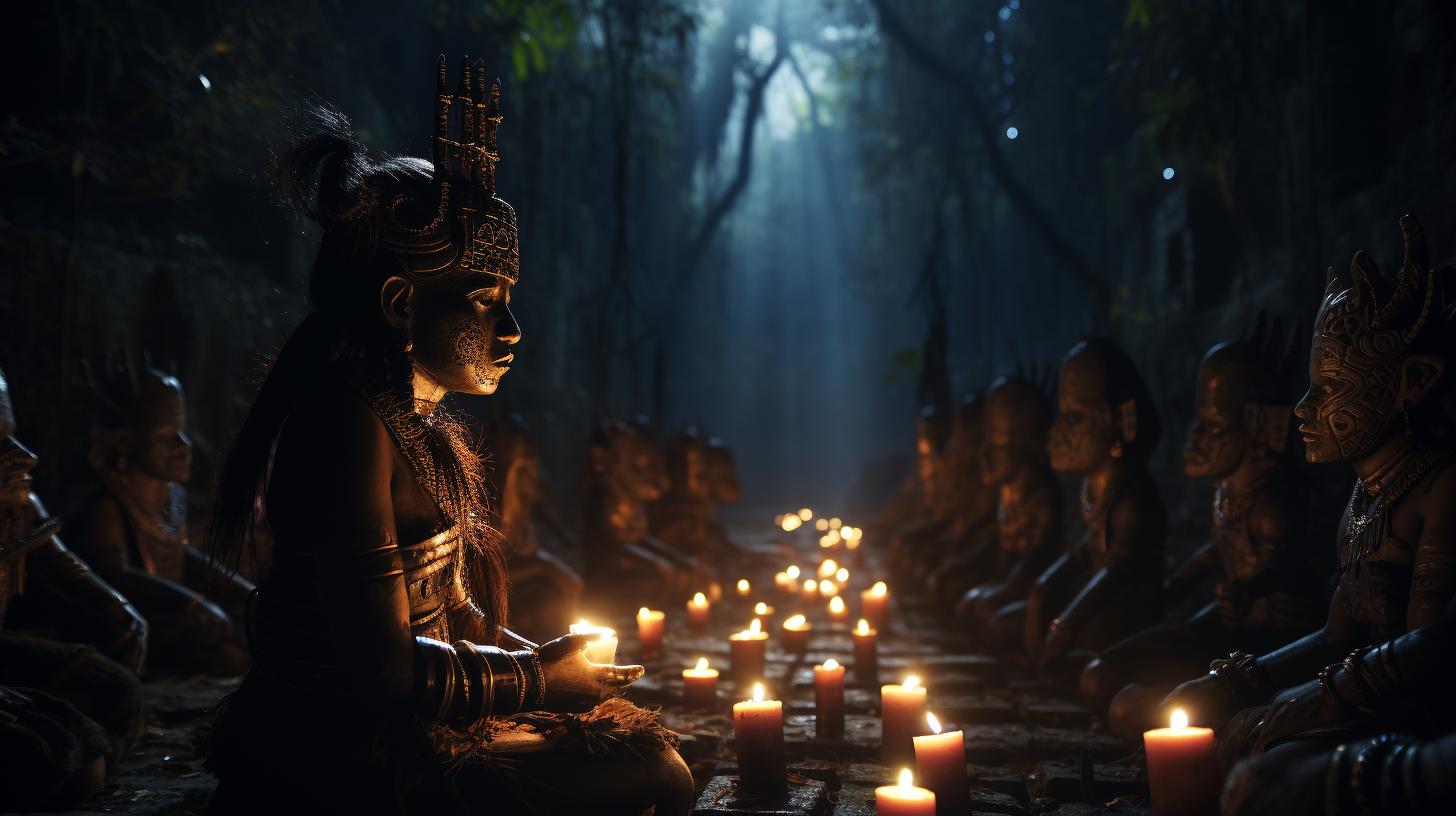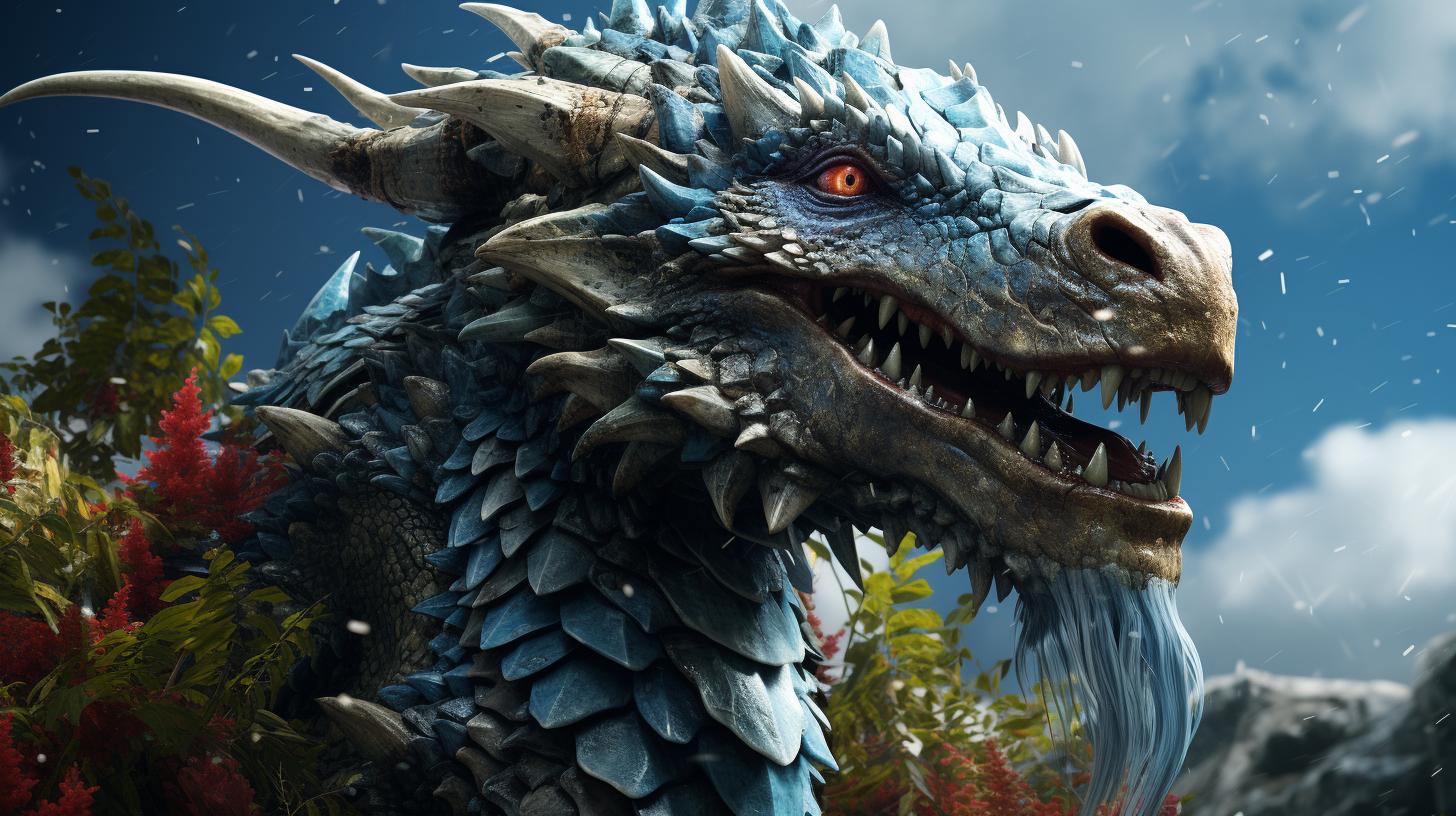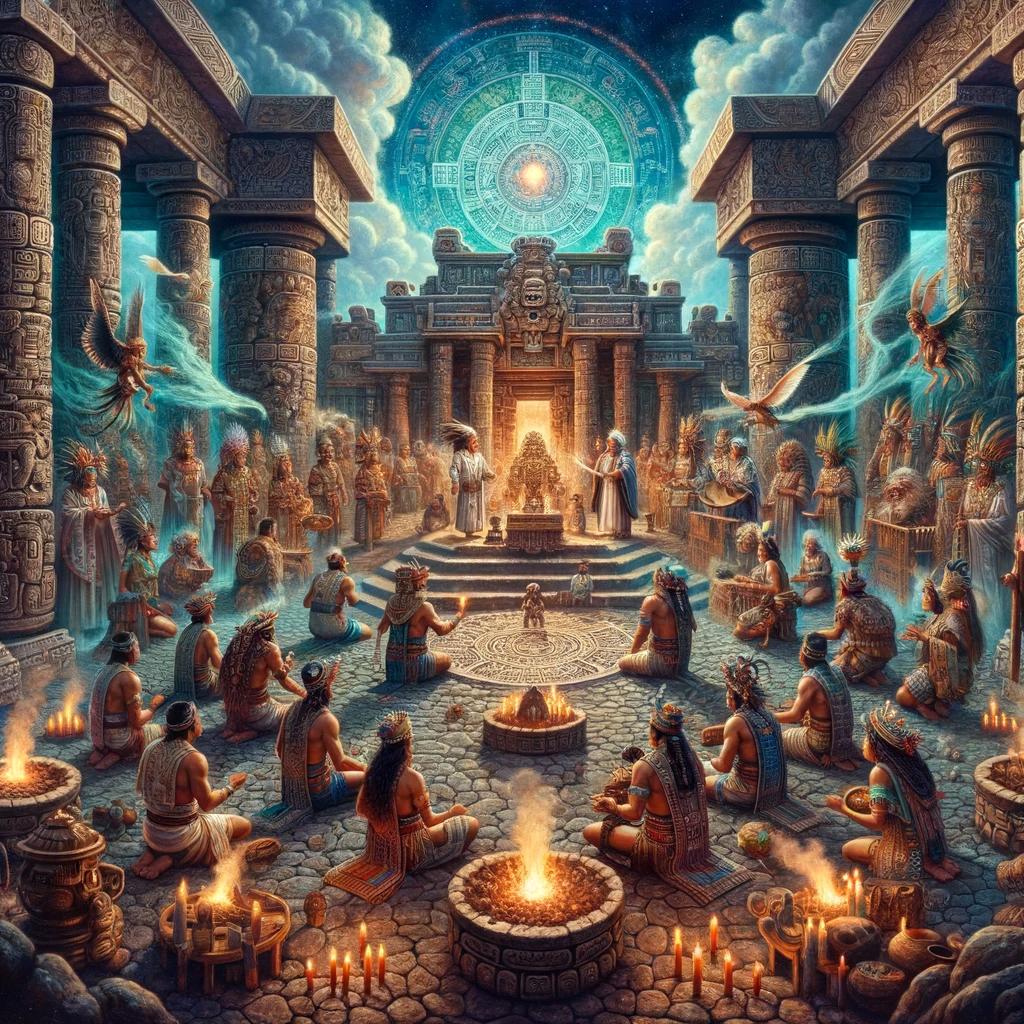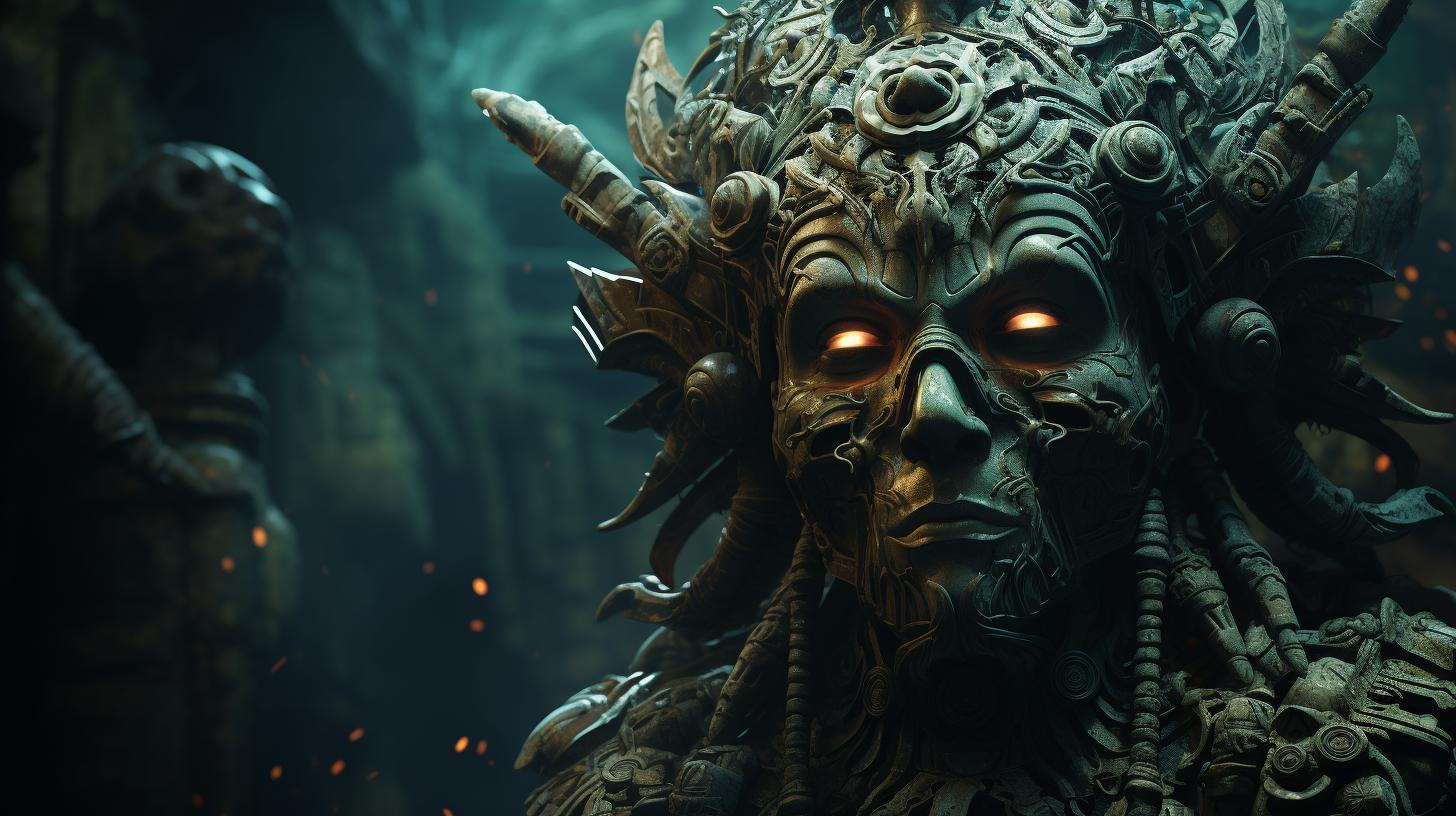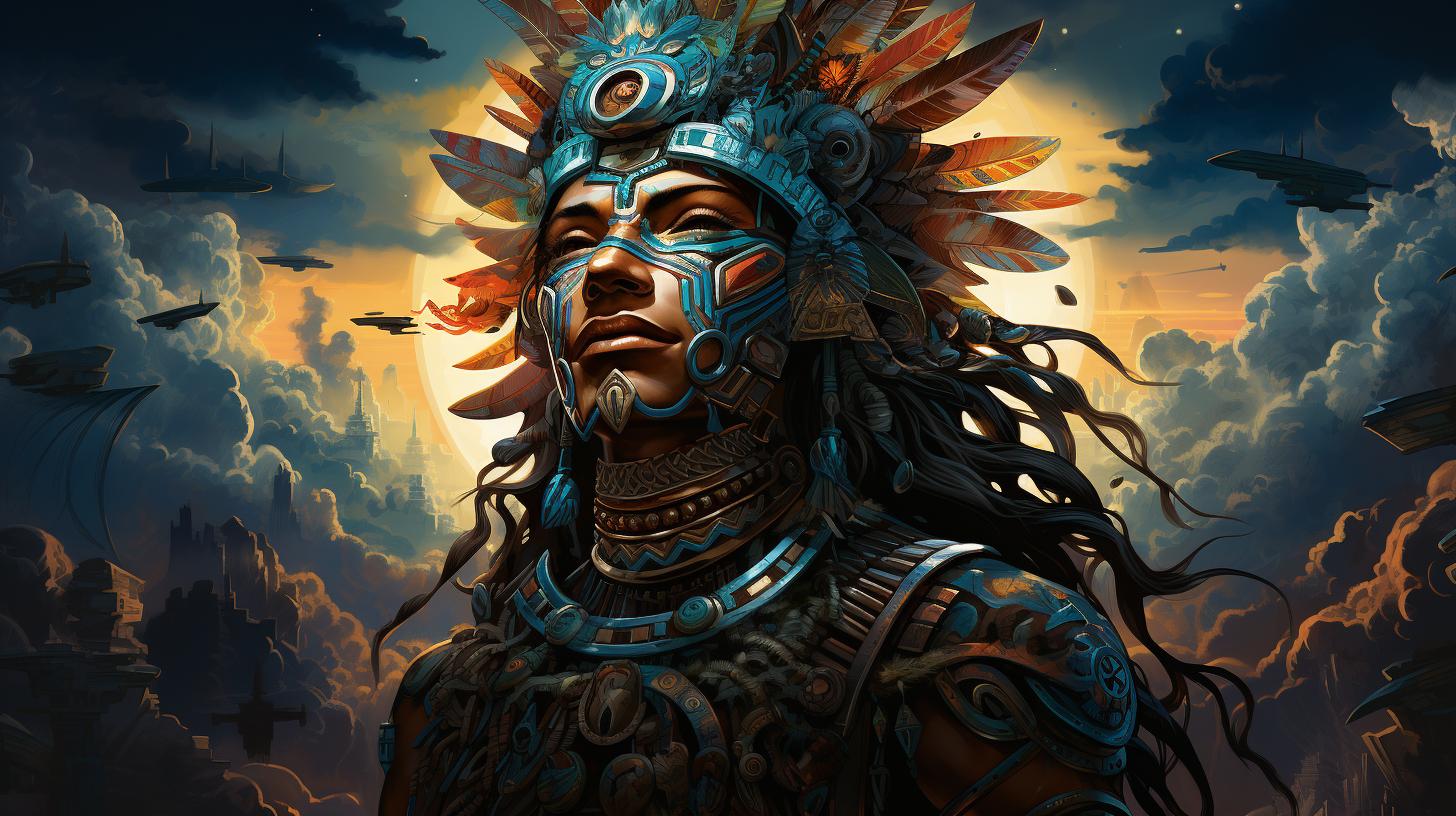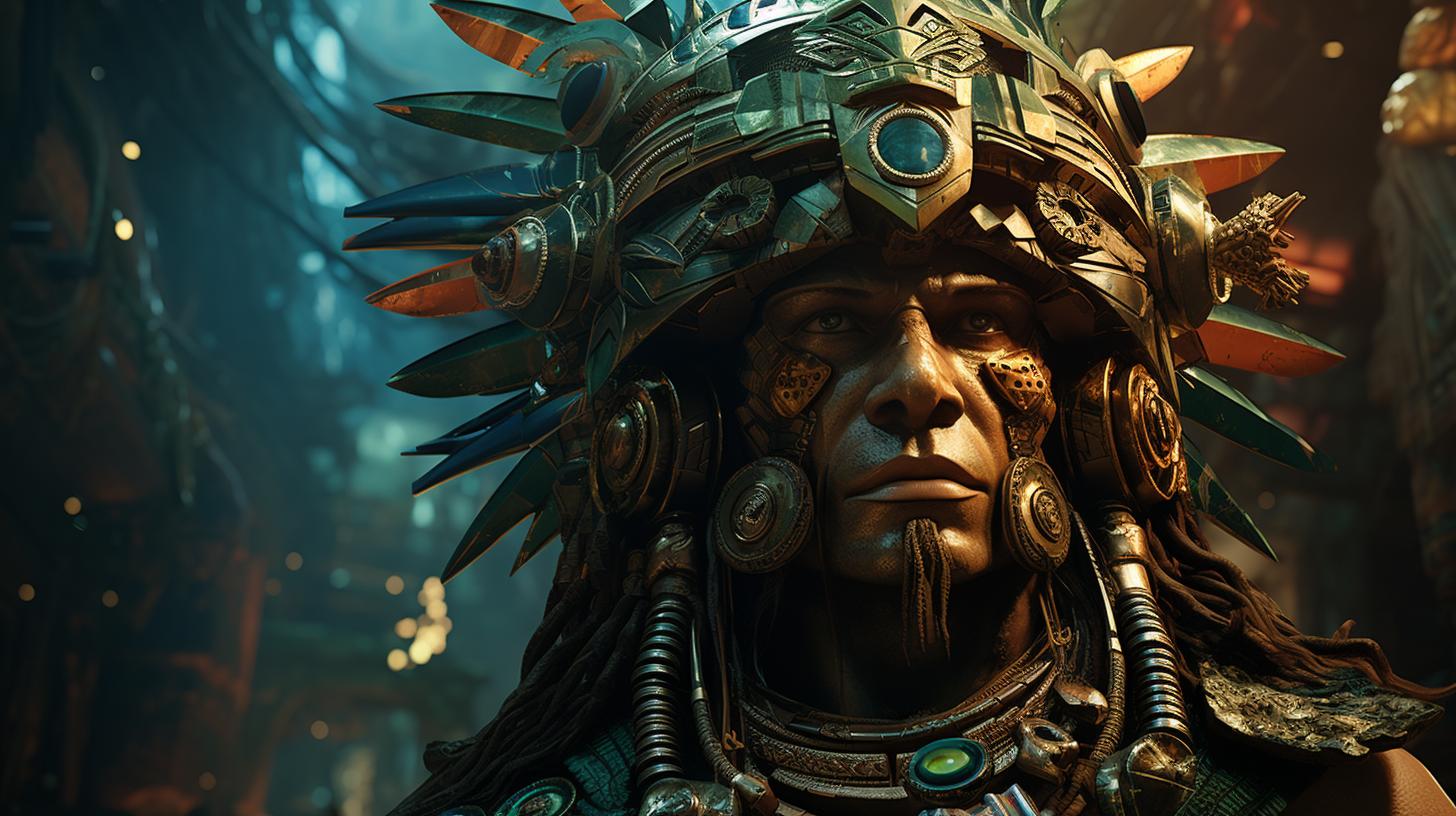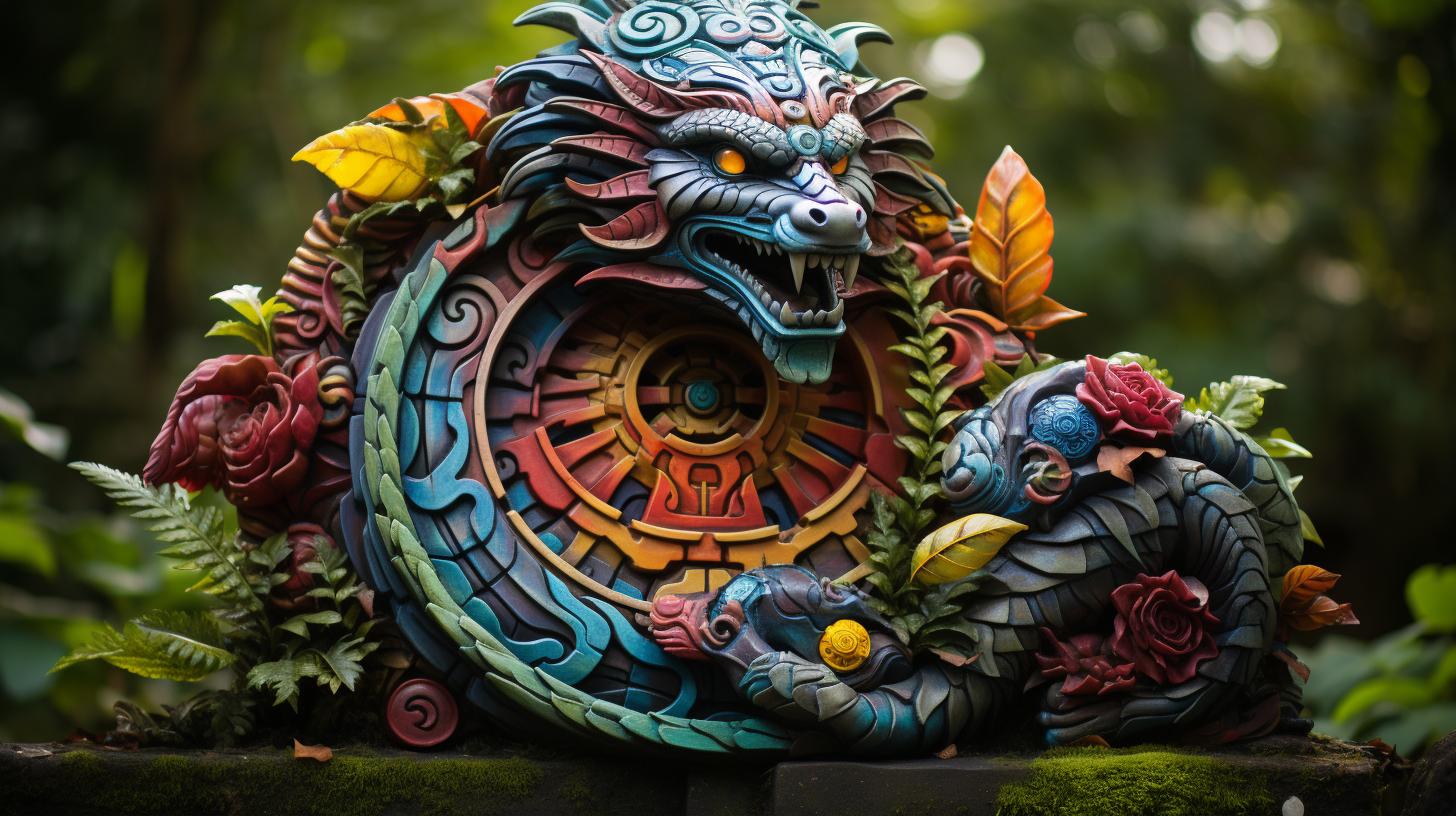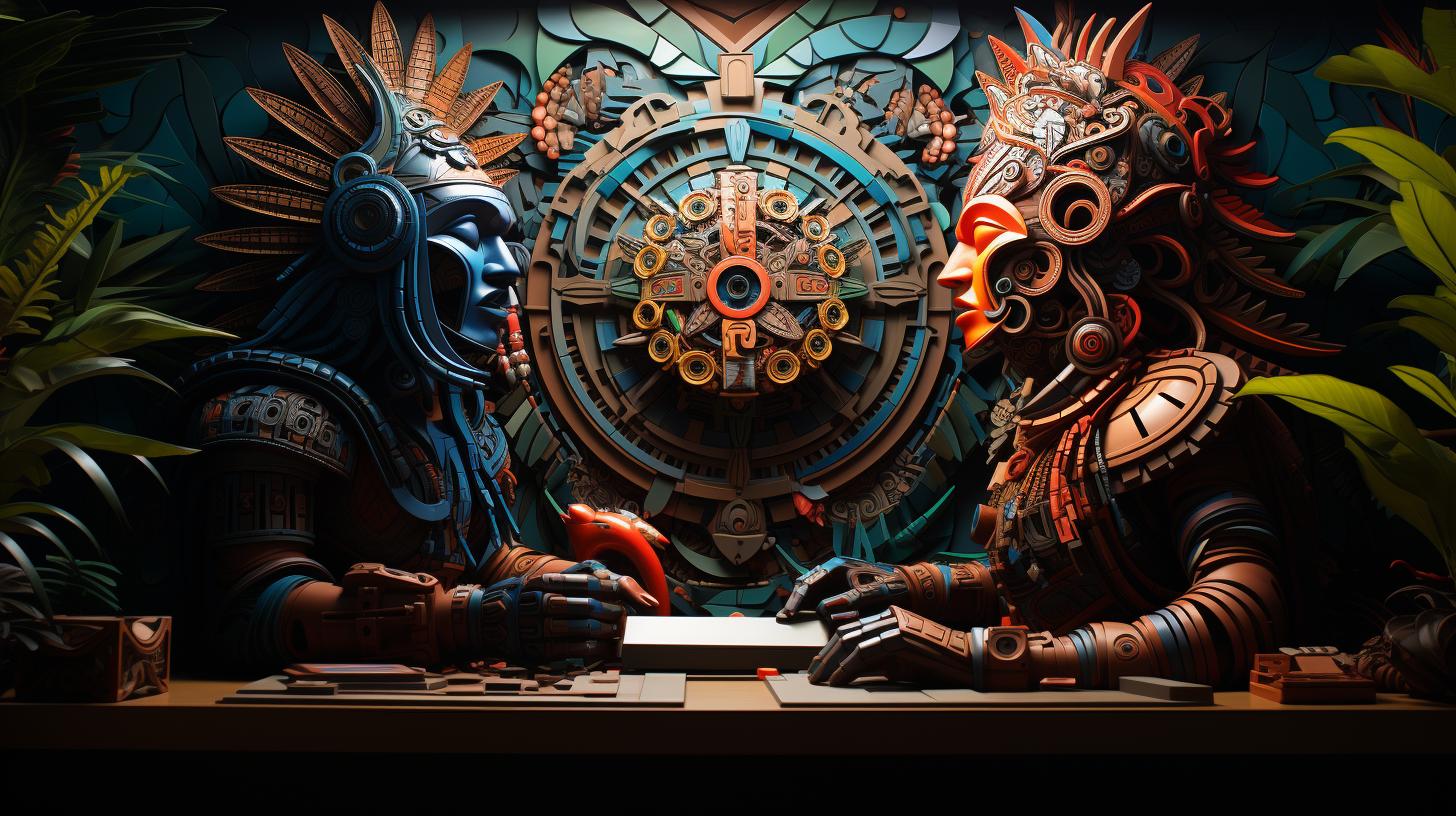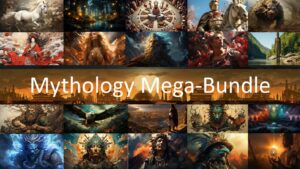Cabrakan Mayan God: Unveiling the Mythology and Power of the Earthquake Deity
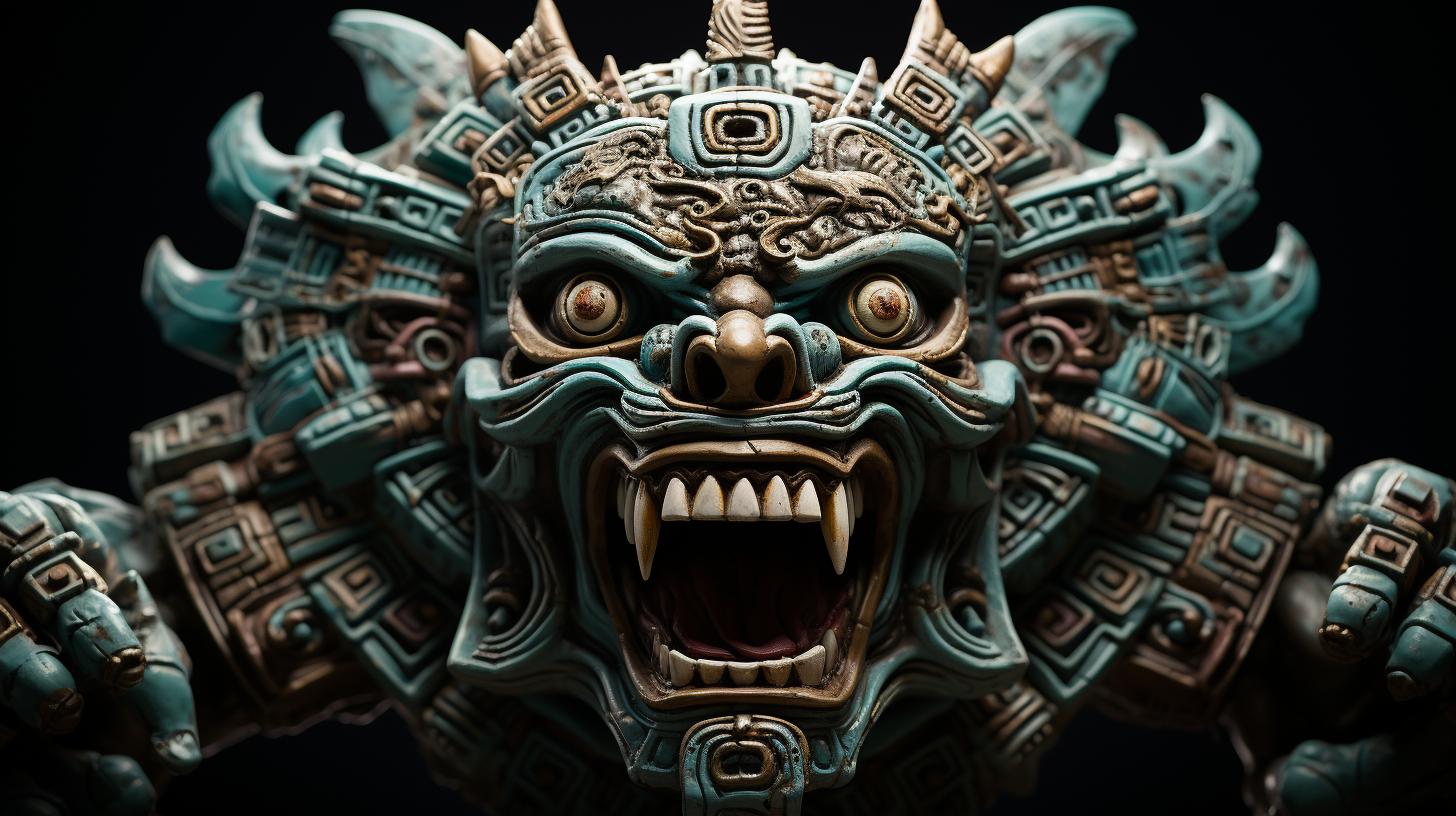
Cabrakan, the formidable Mayan God of earthquakes, holds great power and a volatile nature in the mythology of the K’iche’ people. Described as a deity with immense strength, Cabrakan’s involvement in the battle against Lord Mictlan and his tragic destiny are significant aspects of Mayan folklore.
The Hero Twins played a vital role in halting Cabrakan’s destructive force, using poisonous birds to detain him. Additionally, Cabrakan is revered as the God of Mountains, symbolizing his strong connection to the natural world.
Today, Cabrakan’s influence continues to shape Mayan beliefs and traditions, particularly in Guatemala and beyond.
The Popol Vuh: Sacred Text of the K’iche’ People
The Popol Vuh holds a sacred place in the culture and spirituality of the K’iche’ people, providing valuable insights into their mythology and history. This ancient text, meticulously recorded by the Dominican friar Francisco Ximénez, offers a compelling narrative that delves into the origins of the world and the creation of humankind.
History and Authorship of the Popol Vuh
The Popol Vuh’s origins can be traced back to the pre-colonial era of the K’iche’ people, with some debate surrounding the existence of potential pre-Ximénez manuscripts. However, it is primarily through Ximénez’s efforts that this sacred text has been preserved and shared with the world.
As a dedicated Dominican friar, Ximénez recognized the cultural significance of the Popol Vuh and dedicated himself to transcribing it meticulously.
Exploring the Mayan Creation Myth
The Popol Vuh provides a vivid account of the Mayan creation myth, shedding light on the K’iche’ people’s understanding of the world’s origins. This captivating narrative describes how the gods created the universe, the Earth, and all living beings.
It delves into the experiences and adventures of various gods, including the Hero Twins. The Popol Vuh serves as a valuable resource for understanding the spiritual beliefs and cosmology of the K’iche’ people.
Cabrakan, the Mayan God of Earthquakes
Cabrakan, the Mayan God of Earthquakes, holds a significant place in Mayan mythology, revered for both his unique characteristics and immense powers. His name is derived from the K’iche’ word meaning “earthquake.”
As the God of Earthquakes, Cabrakan personifies the forceful and unpredictable nature of seismic activity.
Characteristics and Powers of Cabrakan
Cabrakan is portrayed as a deity of immense strength, capable of causing destructive earthquakes that shake the very foundations of the earth. He is often depicted with bulging muscles and a fierce expression, symbolizing his raw power.
As the embodiment of seismic activity, Cabrakan possesses the ability to create devastating tremors that can reshape landscapes and cause widespread destruction.
Cabrakan’s temperament is described as volatile and explosive, reflecting the unpredictable and destructive nature of earthquakes. His wrath can be unleashed with great force, shaking the earth and causing chaos.
His immense power is believed to surpass that of any other deity in Mayan mythology.
Cabrakan’s Role in Mayan Mythology
In Mayan mythology, Cabrakan’s role is intertwined with the creation and destruction of the world. According to legends, he played a crucial part in the cycle of creation and destruction, often arousing conflict and chaos.
He is seen as the counterbalance to the life-giving forces of other deities, embodying the necessary destructive power for rebirth and renewal.
Cabrakan’s actions are not always characterized as malevolent; instead, they represent a natural aspect of the cosmos. His role as the God of Earthquakes symbolizes the ever-changing and transformative nature of the world.
The earthquakes he causes are seen as essential for the renewal of the earth, allowing for new growth and development in the wake of destruction.
The Symbolism of Cabrakan in Mayan Culture
- Cabrakan symbolizes the inherent power and unpredictability of natural forces.
- His role embodies the cyclical nature of creation and destruction.
- He represents the forces of change and renewal in the world.
- Cabrakan’s earthquakes are seen as necessary for the growth and evolution of the earth.
Cabrakan’s status as a deity is reflected in the reverence and awe that the Mayan people held for him.
His impact on Mayan culture remains significant, influencing various aspects of their beliefs, rituals, and art. Despite the potential dangers associated with earthquakes, Cabrakan is also regarded with a certain level of respect and admiration for his crucial role in the natural balance of the world.
The Tragic Fate of Cabrakan
The story of Cabrakan, the Mayan God of Earthquakes, is intertwined with both love and tragedy. In this section, we explore Cabrakan’s relationship with Cipactli, his fiery battles against Lord Mictlan, and the ultimate sorrow that befalls him.
Cabrakan’s Relationship with Cipactli
Cabrakan’s tumultuous love affair with Cipactli, often depicted as a monstrous sea creature, is a central theme in Mayan mythology. Their union represents the merging of land and water, symbolizing the creation of life itself.
However, their relationship is marked by discord and conflict, reflective of Cabrakan’s explosive temperament. Despite their differences, the bond between Cabrakan and Cipactli is both passionate and tragic.
Cabrakan’s Battle against Lord Mictlan
In Mayan mythology, Cabrakan’s immense strength and power are put to the test in a fierce battle against Lord Mictlan, the God of the Underworld. This epic confrontation represents the eternal struggle between life and death, order and chaos.
Cabrakan unleashes his seismic might, causing devastation and chaos, while Lord Mictlan attempts to keep the balance by subduing Cabrakan’s destructive force.
The battle rages on, shaking the very foundations of the Mayan cosmos. As Cabrakan unleashes his fury, the earth trembles, and mountains crumble. But in a tragic twist, Cabrakan’s relentless force ultimately leads to his own downfall, as he is defeated and banished to a desolate realm.
Such is the tragic fate of Cabrakan, the God of Earthquakes. His story encapsulates the inherent duality of power and destruction, love and tragedy, in Mayan mythology. It serves as a reminder of the delicate equilibrium that must be maintained in the natural world, where even the mightiest beings can meet their tragic end.
The Hero Twins and Cabrakan
The Hero Twins play a pivotal role in the mythology surrounding Cabrakan, the mighty Mayan God of Earthquakes. Their encounter with Cabrakan showcases their bravery and resourcefulness in the face of this powerful deity.
The Twins’ Encounter with Cabrakan
As the Hero Twins embarked on their quest, they encountered Cabrakan, who displayed his immense strength and volatile temperament. Faced with the task of detaining the destructive force of Cabrakan, the Twins devised a clever plan to bring him under control.
- Using their cunning and wit, the Twins engaged Cabrakan in a fierce battle, demonstrating their martial prowess.
- They skillfully dodged his powerful blows, diverting his attention and luring him into a trap.
- With their keen observations, the Twins noticed Cabrakan’s weakness in the presence of birds.
- They quickly hatched a plan to use poisoned birds as their secret weapon against the mighty God.
This strategic move set the stage for the divine intervention that aimed to detain Cabrakan and prevent further destruction in the world.
The Divine Intervention: Detaining Cabrakan
Armed with their poisoned birds, the Hero Twins executed their plan to detain Cabrakan. They unleashed the birds, whose venomous bites weakened the God and reduced his strength. Cabrakan, unable to resist the toxin coursing through his veins, grew progressively weaker.
- With each strike from the Twins, Cabrakan’s power waned, and his fury subsided.
- Eventually, the Hero Twins managed to neutralize Cabrakan’s destructive force, effectively impeding his reign of chaos.
The divine intervention by the Hero Twins to detain Cabrakan embodies their crucial role in the struggle against the forces of chaos and their determination to protect the world from disaster.
Stay tuned as we explore more fascinating aspects of Cabrakan’s mythology and the enduring legacy of this Mayan deity.
Cabrakan as the God of Mountains
Cabrakan, the fearsome Mayan God of earthquakes, is also revered as the God of Mountains. In Mayan culture, mountains hold immense significance and are seen as sacred spaces. Cabrakan’s association with mountains further highlights his power over the natural world and his role as a divine deity.
Let’s explore the symbolism and importance of Cabrakan in Mayan culture, as well as the legends and stories associated with him.
Cabrakan’s Symbolism and Importance in Mayan Culture
Symbolically, mountains represent stability, strength, and a connection to the heavens in Mayan belief systems. They are viewed as the pillars of the earth, connecting the terrestrial realm with the celestial planes.
Cabrakan, as the God of Mountains, embodies all these qualities. He is the embodiment of raw power and vigor, and his presence is believed to be felt in the towering peaks that shape the Mayan landscape.
Cabrakan’s importance in Mayan culture lies in his association with the natural forces that shaped their lives. The mountains served as vantage points, offering protection and spiritual solace. As the God of Mountains, Cabrakan ensured the stability of these towering landforms, protecting the Mayan people and their settlements from harm.
His essence permeated the mountainous regions, providing a sense of security and connection to the divine.
Legends and Stories Associated with Cabrakan
There are several myths and legends surrounding Cabrakan, each highlighting different aspects of his power and influence. One such legend tells the story of how the Hero Twins, Hunahpu and Xbalanque, encountered Cabrakan during their heroic journey.
In the battle that ensued, Cabrakan attempted to use his immense strength to crush the twins, but they cleverly outmaneuvered him and ultimately defeated him with their unique strategies and divine interventions.
Another legend recounts how Cabrakan’s fury and temper caused devastating earthquakes. The Mayan people feared these quakes as they believed that they were a direct result of Cabrakan’s wrath. They would offer prayers and perform rituals atop the mountains to pacify their enraged deity and ensure the safety of their communities.
Cabrakan’s legends and stories serve as cautionary tales, emphasizing the precarious balance between mankind and nature. They highlight the Mayan people’s deep respect for the power of mountains and their understanding of the need to coexist harmoniously with the natural world.
- Cabrakan symbolizes stability, strength, and a connection to the heavens in Mayan culture.
- Mountains are considered sacred spaces and serve as pillars connecting the terrestrial and celestial realms.
- Legends depict Cabrakan’s battles with the Hero Twins, showcasing his immense strength and the twins’ clever strategies.
- Devastating earthquakes were believed to be a result of Cabrakan’s temper, inspiring rituals and offerings to appease him.
- Cabrakan’s legends highlight the importance of maintaining a harmonious relationship with nature.
The Legacy of Cabrakan in Modern Times
The stories and beliefs surrounding the Mayan God Cabrakan continue to have a significant influence on contemporary Mayan culture, particularly in Guatemala and beyond.
His presence can be felt in various aspects of daily life, from religious practices to artistic expressions. This section explores the enduring impact of Cabrakan on Mayan beliefs and traditions.
Influence on Contemporary Mayan Beliefs and Traditions
Cabrakan’s portrayal as the powerful God of earthquakes and the God of Mountains holds immense significance for the Mayan people. His association with the natural world and his ability to shake the earth embody both the destructive and regenerative forces of nature.
As a result, Cabrakan remains deeply intertwined with Mayan spirituality.
Many Mayan communities continue to honor Cabrakan through rituals and ceremonies that seek his protection and blessings. These practices often involve offerings and prayers to appease the deity and ensure harmony with the earth.
The belief in Cabrakan’s power to bring stability and fertility to the land is still widely held.
Furthermore, Cabrakan’s influence extends beyond religious practices. His image can be found in various forms of Mayan art, including paintings, sculptures, and murals. These artistic expressions help preserve and transmit the myths and stories associated with Cabrakan to future generations, reinforcing his role as a cultural icon.
Cabrakan’s Popularity and Reverence in Guatemala and Beyond
Within Guatemala, Cabrakan holds a special place in the hearts of the local population. Many communities celebrate annual festivals dedicated to him, where traditional dances, music, and performances retell the tales of his power and influence.
These festivities serve as a reminder of the enduring connection between the Mayan people and their ancestral heritage.
Outside of Guatemala, the fascination with Cabrakan and Mayan mythology has spread globally. The compelling tales of the God of earthquakes have captured the imaginations of people from various cultural backgrounds.
This interest has led to the exploration of Mayan history and the incorporation of Cabrakan’s symbolism into popular culture, such as literature, films, and even video games.
Visitors to archaeological sites, such as Tikal and Chichen Itza, often encounter representations of Cabrakan in ancient ruins and carvings. The presence of these depictions serves as a reminder of his enduring legacy and the profound impact he had on the beliefs and worldview of the ancient Mayan civilization.
In conclusion, Cabrakan continues to be a significant figure in modern Mayan culture, influencing beliefs, traditions, and artistic expressions. His power and symbolism transcend time, leaving a lasting imprint on the collective identity of the Mayan people and captivating the curiosity of individuals around the world.
…

